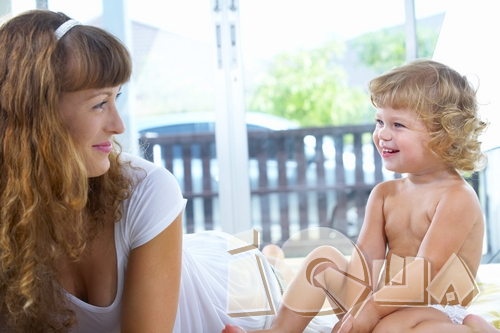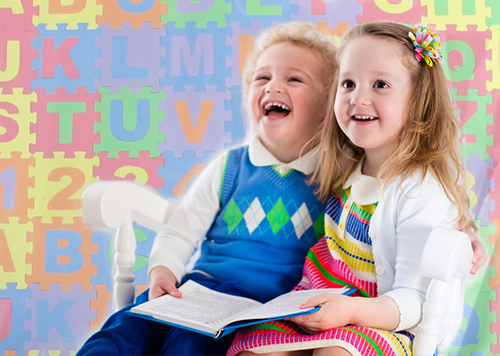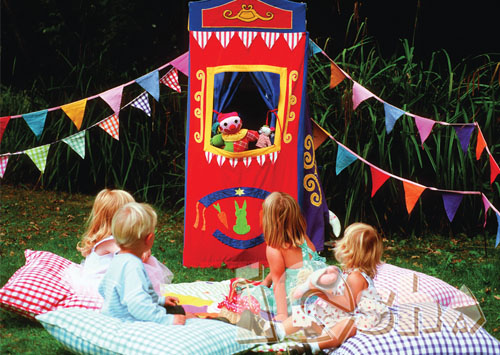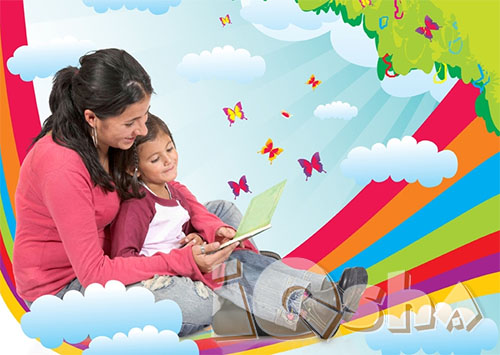Whether you have home lessons with your two-year-old kid or your child visits a daycare group, it is important to remember that in the first three years of life a child absorbs the largest volume of knowledge and skills which will allow him to reach a high level of development. So what can't be missed teaching a two-year-old?
Vocabulary
Research from great companies such as the American Association for the Advancement of Science, Child Study Institute at Bryn Mawr College and others recommend that a two-year-old child should have a vocabulary of at least 25 necessary words. There is an opinion that says if a child does not speak or understand the words mentioned, it is time for parents to appeal for assistance. Here is a list of the necessary words:
- Mommy
- Daddy
- baby
- milk
- juice
- hello
- bye-bye
- yes
- no
- dog
- cat
- ball
- nose
- eye
- banana
- cookie
- car
- hot
- thank you
- bath
- shoe
- hat
- book
- more
- all gone
In order to expand your child’s vocabulary, read more books aloud, decrease the time spent watching television, and discuss details during your walks, trips, or visits to friends, etc. During any games you play with your child, or as you are going about your daily household tasks, pronounce aloud or sing improvised songs about what are you doing.
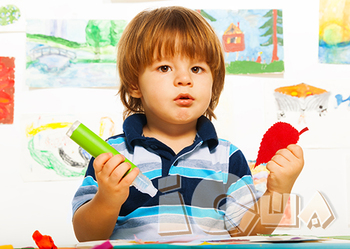 Physical activity
Physical activity
A two-year-old child has to run, jump, swing, hurdle through low obstacles, climb up and down, clamber on vertical ladders, and crawl, ride a bike down a hill, somersault, and play with a ball. You can teach your kid the alphabet or counting, or to learn poems by heart - but those activities must be combined with physical activity. Building a tower from blocks, but don’t just sit your child at a table to do so; also create long paths of blocks on the floor. Singing about letters or figures, and play hide-and-seek. Take a ball in hand and teach them to catch it, throw it in a basket or a hoop, throw it far and fetch it, or play bowling with it.
Understanding and Completing Instructions
A two-year-old child can understand what an adult or another child asks, and can satisfy a request or actively refuse to do something, explaining "I don't want to" or "I won't do it". At this age, outdoor games in which it is necessary to perform simple operations are popular and loved: to sit down and stand up, to raise hands up and down, turn around, etc. If a two-year-old kid constantly, without any exception ignores a household or a game request, silently turns away from an interlocutor, or does something that has no relation to the request - it is time to worry and perhaps visit a children's psychologist.
Communication
Two-year-old children are able to play together with each other, rather than just playing separately within the same space. They can plan games together, share objects, roll cars, dress dolls, cook food for a bear, or just cheerfully run together. Such communication is feasible for two-year-olds. It is time for a child who has never seen his peers to be acquainted with other children. The age from two to three years is very important so a child can learn how to introduce himself ("Hello", "Good-bye", "My name is Mike", "What is your name?", "Let's play"), share toys, play on one playground, take turns, use different timbres of their voice for influence, care for others, and help. Even if a child is able to do all this with adults - he still needs some time and a lot of new skills in order to repeat the same actions in communication with children of the same age.
Intellectual development
Certainly, all children develop differently, but there is basic knowledge which will move your child further if he possesses it. A two-year-old must know:
- Names of parts of a body
- Names of 6-10 types of domestic and wild animals
- Names of products, such as dishes and drinks which a child uses often
- Some geometrical forms: a circle, a square, a triangle
- Basic colors: red, yellow, green, blue, black, white
- Directions of movement: above, below, right, left (can confuse, but it is important to distinguish these prepositions from top and bottom)
- Object position: in the middle, between, over and under, inside and outside.
- Names of articles of clothing and footwear the child uses.
- Concepts of "few" and "a lot of", "big" and "small", "far" and "close"

